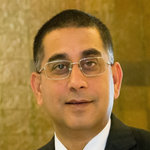
Mastercard Inc
NYSE:MA

Mastercard Inc





Mastercard Inc., a titan in the global payments industry, operates at the heart of the digital economy's relentless march forward. Established in the 1960s, the company initially started as a consortium of large banks seeking to offer a new kind of financial service—a plastic card that could be used universally and significantly ease the burden of carrying cash. Fast forward to the present, Mastercard has transformed into a technology company in the global payments space, facilitating transactions across a vast network that spans over 210 countries and territories. The company connects consumers, financial institutions, merchants, governments, and businesses worldwide, offering not merely a payment card but an intricate web of products and services that aim to make transactions faster, easier, and more secure.
The genius of Mastercard’s business model lies in its "four-party" system: it connects the cardholder, merchant, issuing bank, and acquiring bank with precision and efficiency. Mastercard does not issue cards itself; instead, it licenses its brand and technology to banks and financial institutions, which in turn issue the cards to consumers. The company earns revenue primarily from transaction processing fees whenever a Mastercard is used, as well as additional fees for services related to fraud prevention, data analysis, and consulting. This model allows Mastercard to capture value by facilitating and securing transactions, taking advantage of the network effect where more cardholders and merchants fuel usage, thereby increasing volume and boosting revenues. As the world increasingly shifts to cashless transactions, Mastercard finds itself in a favorable position, acting as a key player and enabler in this global transformation.
Earnings Calls
In the first half of 2023, Teleperformance demonstrated a strong performance despite a challenging macro environment. The company reported a like-for-like revenue growth of 7%, with total revenues reaching €3.96 billion, signifying marginal reported growth of 0.4%. The EBITDA increased to €807 million, improving margins by 30 basis points to 20.4% overall and 14.6% for EBITDA margin specifically. Specialized Services showed a significant growth momentum with a 17.2% increase. However, net profit remained flat at €271 million due to higher interest expenses. The company adjusted its full-year like-for-like revenue growth forecast, excluding COVID contracts, to between 6% and 8%.
Management

Edward Grunde McLaughlin is an executive known for his significant contributions to Mastercard Incorporated. He has served as the President of Operations and Technology at Mastercard, a role in which he has been responsible for overseeing the company's technology operations globally. His leadership has helped drive innovation and efficiency within the organization's technological infrastructure, ensuring that Mastercard remains at the forefront of the payment industry. Before ascending to this prominent role, McLaughlin was the Chief Information Officer (CIO) at Mastercard. As CIO, he led the company's technology strategy and was pivotal in advancing Mastercard's digital transformation efforts. His work focused on enhancing cybersecurity measures, improving data analytics capabilities, and fostering a culture of technological innovation to meet the demands of a rapidly evolving financial landscape. McLaughlin joined Mastercard in 2005, bringing with him valuable experience from his previous roles in the financial services and technology sectors. His industry expertise and forward-thinking approach have played a crucial role in Mastercard's efforts to develop and implement cutting-edge payment solutions for businesses and consumers worldwide. Throughout his tenure at Mastercard, Edward McLaughlin has been recognized as a key figure in steering the company through various technological challenges while positioning it as a leader in the global payments ecosystem. His commitment to leveraging technology to enhance customer experiences and drive business growth continues to make a significant impact on the company and the industry as a whole.

Timothy Henry Murphy is a prominent executive who has been associated with Mastercard Inc. in various leadership roles. He has played a critical role within the organization, contributing significantly to its growth and strategic direction. Tim Murphy has served as the General Counsel for Mastercard, where he was responsible for overseeing the legal affairs of the company globally. In this capacity, he worked on ensuring that Mastercard's operations complied with various legal and regulatory requirements, an essential function for maintaining the company's reputation and operational integrity. Beyond his role as General Counsel, Murphy has taken on other strategic responsibilities within Mastercard. His leadership skills and legal expertise have been crucial in steering complex transactions, managing global regulatory challenges, and driving strategic initiatives that align with Mastercard's business goals. Murphy holds a Juris Doctor (J.D.) degree, which underpins his extensive legal acumen and has been fundamental in his professional journey within Mastercard and beyond. Throughout his tenure, Timothy Henry Murphy has been recognized for his ability to blend legal insights with business strategy, making him a valued member of Mastercard's executive team. His contributions have helped bolster Mastercard's position as a leader in the global payments industry.

Devin Corr serves as an executive officer at Mastercard Inc., holding the position of Treasurer. In this role, he is responsible for managing the company's global treasury operations. His duties encompass overseeing corporate finance, capital markets, global banking, and risk management activities. Corr plays a pivotal role in ensuring optimal liquidity management and strategic financial planning, contributing to Mastercard's overall financial health and operational success. He brings extensive experience to this position, having built a career specializing in corporate treasury and financial risk management. His leadership helps drive Mastercard’s financial strategies and supports its mission to build a more connected and inclusive economy.

Tiffany M. Hall is an executive at Mastercard Inc., recognized for her extensive experience in technology and operations management. She serves as the Executive Vice President of Global Consumer Products and Processing. In this role, she focuses on enhancing Mastercard's offerings in the digital and consumer products space and plays a crucial role in driving innovation to meet evolving consumer needs. Hall is celebrated for her strategic vision in technology and her ability to lead cross-functional teams to deliver impactful business results. Prior to joining Mastercard, she held various leadership positions in other tech-driven companies, where she honed her expertise in product development and digital transformation. Her leadership at Mastercard is instrumental in ensuring the company stays at the forefront of payment solutions globally.

Raja Rajamannar is a notable figure in the business world, particularly known for his role as the Chief Marketing and Communications Officer at Mastercard Inc. He is recognized for his innovative approach to marketing and for driving the company's transformation in an increasingly digital landscape. Rajamannar joined Mastercard in 2013 and has been instrumental in evolving the company’s brand strategy, digital marketing, innovations, sponsorship activities, and driving business-building initiatives globally. His work focuses on modernizing the Mastercard brand and enhancing consumer engagement through cutting-edge marketing technologies. Before joining Mastercard, he had an extensive career in financial services, healthcare, and consumer goods. He has served in senior marketing and business roles at companies such as Anthem, Inc., Humana, and Citigroup. In addition to his marketing expertise, Rajamannar is known for his visionary thinking and leadership in advocating for the fusion of marketing with technology to create a more impactful consumer experience. Raja Rajamannar is also an author, having penned "Quantum Marketing" — a book that outlines a radically new approach to marketing based on his extensive experience and insights. His thought leadership and contributions to marketing have earned him numerous accolades and recognition within the industry.
Ruosi Wan serves as the Executive Vice President, Services and Data, Asia Pacific at Mastercard. Her role involves driving the strategic growth and development of Mastercard's services and data business, focusing on areas such as cybersecurity, artificial intelligence, and data analytics to support the company’s growth and innovation in the Asia Pacific region. Prior to her current position, Wan held various leadership roles within Mastercard, demonstrating a strong track record in business development and strategic planning. Her expertise in leveraging data and technology to enhance payment solutions has been instrumental in advancing Mastercard’s objectives in the region. Wan’s leadership is characterized by her focus on fostering innovation and building strong partnerships across different markets.

Michael Fraccaro is a prominent business executive known for his role at Mastercard Inc. He served as the Chief People Officer at Mastercard, where he was pivotal in leading the company’s human resources strategy. Fraccaro joined Mastercard in 2012 and held various roles before becoming the Chief People Officer in 2016. In his role, Michael Fraccaro has been responsible for talent management, learning and development, organizational development, and fostering a strong culture within Mastercard. He focused on helping the company adapt to a rapidly changing work environment, emphasizing diversity, equity, and inclusion as well as creating a collaborative and engaging workplace for employees. Before joining Mastercard, Fraccaro had a significant career in banking and financial services, including leadership positions in human resources at HSBC. His deep expertise in human resource management and talent development has been instrumental in driving Mastercard’s people strategy globally. Michael Fraccaro holds a Bachelor of Education degree and a Master of Applied Science from the University of Wollongong in Australia.

Safdar Khan is an executive at Mastercard Inc., where he has held several key leadership roles. He currently serves as the Division President for Southeast Asia, a position in which he is responsible for overseeing operations and strategy across the region. With a focus on driving digital transformation and financial inclusion, Khan has played a significant role in expanding Mastercard’s presence and influence in Southeast Asia. Previously, he has led Mastercard’s businesses in various regions, including the Middle East and Africa. Khan's expertise in financial services and his strategic vision have contributed to Mastercard's growth in emerging markets. He is known for fostering innovation and partnerships that advance the company’s digital solutions. Under his leadership, Mastercard has introduced various initiatives aimed at empowering consumers, businesses, and governments through advanced payment technologies. Throughout his career, Khan has been recognized for his ability to navigate complex markets and for his commitment to promoting a cashless society. His work aligns with Mastercard’s broader goals of creating a more connected and inclusive global economy.

Eva Chen is not a well-known executive officer at Mastercard Inc. Therefore, it is likely that there is no public biography or detailed information available about her in the context of Mastercard. If you meant someone else or have any other queries, please let me know.

Ling Hai is a prominent executive associated with Mastercard, recognized for his leadership roles within the company. He has served in various capacities, contributing significantly to Mastercard's strategic expansion, particularly in the Asia-Pacific region and other emerging markets. Ling Hai co-presided over Mastercard's business in Asia-Pacific and was responsible for overseeing operations, business development, and driving strategic partnerships across the region. His deep expertise in financial services and his ability to navigate complex international markets have been instrumental in Mastercard's growth and innovation strategies. Before joining Mastercard, he held several key positions in global financial institutions, which equipped him with a robust understanding of the financial ecosystem and consumer behavior in diverse markets. Ling Hai is known for his forward-thinking approach and commitment to leveraging technology to enhance financial inclusion and improve customer experience. Throughout his career, Ling Hai has built a reputation for fostering collaborative environments and advocating for diversity and inclusion within the workplace. His leadership style is characterized by strategic vision and an emphasis on developing sustainable business practices.





















































 You don't have any saved screeners yet
You don't have any saved screeners yet

Good day, and welcome to Teleperformance 2023 First Half Results Conference Call. Today's call is being recorded.
At this time, I'll now turn the call over to Bhupender Singh, Deputy CEO of Teleperformance. Please go ahead, sir.
Thank you, and hello, everyone, and once again, welcome to the 2023 first half results.
And if you're wondering why Olivier is not here, then unfortunately, he tested positive for COVID today. And so, I'll try my best to cover for him.
So, let's start with the first half highlights. Despite a challenging macro environment, we've had a resilient performance in the first half of this year. The like-for-like revenues, excluding the COVID contracts, we've had 7% growth rate this year. The EBITDA margins have gone up by 30 basis points to 20.4%. The EBITDA margin has gone up 30 basis points again to 14.6%.
And the key drivers of this resilient performance in H1, one, we have a diversified client portfolio, and I'll touch upon it in a bit; second, we have had good growth rates in Europe, at the same time, we have had a slowdown in the U.S. market. There has been a strong demand for offshore services, which has had good margin impact, though on the top-line, it has been deflationary. And Specialized Services continue to expand at a good pace. On the downside, we have seen continued delays in contract signings, especially in the U.S.
Coming to some of the non-financial highlights. Last month, we announced that we've got Great Place to Work recognition in 72 countries, which is an increase of eight countries versus last year, and now covers 99% of the group's employees. In the last quarter, we've also signed three new agreements with local unions in Colombia, in Romania and in Poland. You'll be very pleased to know that the Columbia government has now officially closed its investigation, that was initiated in November, without a single adverse finding against Teleperformance. And we have further strengthened our Board of Directors with the co-optation of Mr. Kevin Niu, who is an AI entrepreneur and is a PhD from Harvard.
Now let's look at some of the numbers in more detail. So, we had revenues in the first half of €3.96 billion, which on a reported basis represents a growth rate of 0.4% and on a like-for-like basis, a growth rate of 2.2%. But more importantly, excluding the impact of the COVID support lines that we had for governments in Europe, namely Netherlands, U.K., France and Germany, it's a 7% growth rate.
EBITDA is now up to €807 million in the first half, which is an improvement of 30 basis points. EBITDA at €577 million at 14.6%, and that translates into a net profit of €271 million, which is relatively flat versus last year because of increased interest expenses, and I'll touch upon that again a bit later.
This is the revenue bridge between H1 of 2022 and this year. So, we had highly unfavorable currency effect, especially in Q2. We had €108 million impact in H1, 96% of that impact was in Q2, because of increased volatility and declines in Colombian peso, Egyptian pound, Argentina peso, Indian rupees and the hyperinflation in Turkey. Then, we had the €184 million of the discontinued COVID contracts. And these declines were negated by a net organic growth rate of 7% to the tune of €268 million in the first half and then, we had €38 million coming from the PSG acquisition.
As I touched upon earlier, one of the primary drivers that we have been able to handle the current macroeconomic challenges is because of our diversified portfolio. As you can see, we are not overly exposed to any particular industry sector or vertical. Healthcare, financial services and media entertainment are our biggest verticals, but even the biggest vertical, we have only 16% of our overall revenues coming from that.
Now let's look at the revenue by business unit and by geographies. So, I'll focus on the growth rates -- like-for-like growth rates in H1.
So, Core Services, we've had overall 5.3% growth rate, excluding the COVID contracts. Within that, if you look at North America and APAC, we've had 0.3% growth rate only. That has been somewhat laggard this year, and that's driven by two things. One, we've seen decline in volumes in some of the traditional high-volume generation sectors in the U.S., mainly telecom, technology and the retail sector. And number two -- and that's mainly driven by consumer sentiment. And number two, we have seen an increased trend for offshoring, which has reduced the revenues, though the margin impact is positive. LatAm has come at 4.3% growth rate in the first half, and it's a mixed story. We have seen good growth momentum in Colombia and Peru, but we have seen declines in Mexico with a strong peso. EMEA has been very strong, 10.8% growth rate on a like-for-like basis, excluding COVID contracts. And this is driven by a good growth rate in the multilingual hubs and in the German market.
Specialized Services continues to have very good growth momentum, 17.2% in the first half, and this is driven by brisk growth rate in LanguageLine Solutions and the continued rebound in recovery in TLS post-COVID. Also, I do want to remind everyone that we all are coming from a very high base in Q2 of 2023. And some of this base effect will start weaning off in the subsequent quarters.
If you look at the EBITDA margins by business unit and geography. Overall, as I mentioned earlier, it's a 30 basis point improvement from 14.3% to 14.6%.
In the Core Services and D.I.B.S., we have maintained the EBITDA margin despite losing the significant gross margin from the discontinued COVID contracts. Within that, in North America and APAC, we have seen a 60 basis points improvement, driven by increased offshoring. LatAm, the improvements in Colombia and Peru have been somewhat negated by reduction in Mexico. And EMEA, the reduction is largely because of the COVID contracts. Excluding COVID contracts, actually, EMEA has shown an improvement in operating margin.
And Specialized Services, we have seen some reduction in the margin because of tighter labor market for the Specialized Services staff. But overall, it continues to be very healthy, 28.3% EBITDA margins.
So overall, still very healthy, 14.6% and a 30 basis points improvement.
So, what does it mean in terms of operating profits? So the EBITDA margin of 14.6% or €577 million in the first half. After amortization and accounting for the non-recurring items, it translates into an operating profit of €446 million, which is a 1.8% improvement versus the previous H1 of 2022.
And this €446 million of operating profit translates to a net profit of €271 million, which is largely flat versus last year. Two big items there. One, the interest costs have increased by €18 million this year because of higher net debt for the acquisition of PSG and also the interest rates for the variable component are higher. Income tax, both at an absolute level and also as an effective tax rate level, are lower than last year through better tax management.
Cash flow. We had a net free cash flow of €309 million this year despite the higher income -- higher interest payments, largely because of better discipline on CapEx. We expect go-forward CapEx also in the circa 3% of revenue range.
So, what's the financial position in terms of net debt end of this half on June 30, 2023? It's €2.63 billion. We had net free cash flow of €309 million that we just discussed and the outflow was largely for dividend and share buyback. With this, we maintain a fairly strong financial structure and which is largely protected against any increases in interest rates, if any. And we maintain our credit rating of BBB with S&P. The average cost of debt is 2.8% and average maturity of gross debt is 3.1 years.
Coming to 2023 outlook. So, we expect the macroeconomic environment to continue to be challenging, and it's driven by three factors. One, we're seeing increased uncertainty. Almost every few weeks, we are seeing a different commentary, whether it, be a recession, a hard landing or a soft landing or no recession at all, and that does have a bearing on the psyche and the decision-making of our clients. So, we are seeing slowing decision-making, especially in the U.S. Number two, we have seen fewer launches of new products and services, and that has impacted the volumes. And number three, with the increased efficiency drive, we're also seeing increased offshoring. So, we expect headwinds in terms of top-line.
And accounting for those realities, we have adjusted our revenue growth rate -- like-for-like revenue growth rate, excluding the COVID contracts to between 6% and 8%. At the same time, we are confirming our EBITDA margin target of 16%, which is a 50 basis points improvement versus last year.
And finally, the Majorel acquisition continues to be on track, and we hope to close the acquisition in Q4 of this year.
Thank you. And now I'm ready for any questions.
Thank you. [Operator Instructions] We will take our first question from Simon LeChipre from Stifel. Your line is open. Please go ahead.
Yes. Good evening. Three on my side, please. First of all, you named a few changes, so basically delay in client decision-making process, lower volumes, offshoring. Could you perhaps quantify the drag coming from each of this factor on the top-line?
Secondly, looking at your outlook, so basically, the midpoint of your guidance implies a 7% like-for-like growth in H2, so an acceleration compared to Q2. What is your level of confidence on achieving such a pace of growth, knowing you capture your guidance for the second time this year?
And lastly, could you update us on your mix between onshore and offshore? And where do you think it could go over the, let's say, the next two years? Thank you.
Yes, Simon. So, I'll take the middle question because, frankly, I don't have the data for the first and the third one, which is the details of quantification of the three factors. On the confidence level on the 6% to 8% guidance, this is a difficult year to forecast. We have seen that. We started the year well, then we saw a slowdown in decision-making, then actually it started back again, then we saw another pause. So, frankly, we have seen too many stop starts this year to be able to be fully confident about what's going to happen in H2.
From what we are seeing, given that a lot of new business from new logos is largely decided, so we don't expect any major changes there. But at the same time, we do get and as you've seen historically also Q3 and Q4 are big quarters for us, and these are driven by big volumes. And if for some reasons, those volumes don't materialize, then there may be some impact. Sitting here, we think that we should be able to do the new guidance that we have done, but I just don't want to sound totally confident, because this has been a very difficult year to forecast.
Okay. And just on my first question, and I mean, I appreciate it's hard to quantify precisely the drag from the different factors, but perhaps if you could just tell us what is the most important, let's say, drag among the three? Yes.
The biggest thing that we have seen is we have seen substantial volume declines from the traditional big volume players. There's a digital commerce, which is coming off a pandemic high. And then also telcos and others, because they're not launching that many new products and services and the consumer sentiment is down, we are seeing some volume declines with them. So that, to some extent, is a large component.
And where there's not a volume decline, the remaining volume, they want it to be serviced from the most efficient places. So that's why you're seeing an improvement and increased growth rate in the likes of Colombia, India, Philippines and -- which has a positive impact on margins but a negative impact on the growth rate.
I do want to highlight that even 7% in H1 and 6% to 8% overall for the year, in this environment, is one of the best in the industry. If you look at either direct competitors in the CX space or some of the indirect competitors, this is one of the best growth rate. So, I hope that's not lost on people.
Thank you.
We will take our next question from Karl Green from RBC. Your line is open. Please go ahead.
Yes, thanks, and good afternoon and good evening, Bhupender. I've got three questions, if I can. Firstly, just in terms of the LLS margin, I think you've said in the statement that there's an expectation that, that situation will improve going forward. Could you just explain why you think the margin can improve in terms of what you're presumably doing around pricing and efficiencies? That's the first question.
The second question, just in terms of the D.I.B.S. business, I know you don't tend to break it out, but just trying to understand and contextualize this revenue softness, is it the D.I.B.S. business specifically that's seeing greater uncertainty around decision-making, or is it the kind of core traditional, the outsourcing decision, which is slowing up?
And then, the final question, just in terms of that really quite sharp slowdown in Latin America when we look at the year-on-year growth trending over the last three or four quarters. I mean, how much longer do we think that could continue for? I mean, is it likely given the strength of the Mexican peso, that business could -- the trajectory could continue and that perhaps Latin America organic growth could go negative for that reason alone? I'll leave it there and there's a bunch of other questions as well, but I think it's -- three is enough for now.
Yes. So, LanguageLine Solutions margin, firstly, it continues to be very, very healthy. So it's not that we are overly concerned about it. Yes, there is a drop, and the drop is on account of two factors. One, we have seen that the wage pressures for more specialized resources is higher. So some of that has flown into the margins. And number two, because we are seeing a strong demand, we have also somewhat over-hired. And so, obviously, once the staffing levels come to more normal, that effect will go away. So, we do expect it to improve going forward.
D.I.B.S. and core, we don't separate that out. It's actually now almost every business, and as I mentioned earlier, 70% of our top 200 clients have some kind of a transformation component involved. So, we don't separate that out, this thing. The U.S. market, it's more driven by -- it's actually some of the offshore markets are growing much faster. The U.S. is the overall impact of the macroeconomic challenges and not related to D.I.B.S. versus core.
And Latin America, peso, look, this is -- I'm not an expert on foreign exchange. What we are seeing is there is a good demand for a number of Latin American markets. And it's not only one. There are multiple markets. There is Mexico, there is Colombia, there's Peru, there's El Salvador, there's Dominican Republic. So, yes, there may be a currency effect in one place, and because of that, the attractiveness of that geography comes down, but that's the benefit of being TP, because we have got multiple other options that can deliver value to the client.
Okay. Thanks very much. I'm just following up on that last point. I mean, just assuming that the Mexican peso doesn't change from where it is today, do you think there's a lag? Do you think there's further declines to come in that region, which is going to drag down both like-for-like growth and the margin just based on current spot rates and the annualization of that?
Yes. So again, Karl, we look at Latin America as a bigger sourcing destination and not necessarily only Mexico. So, can Mexico go down further? We don't know. But do we expect Latin America as a destination for American clients to improve? Absolutely, yes. So, as I said earlier, it may be that the demand for Mexico because of such a rapid increase in the strengthening of peso versus dollar, some of the competitor advantage has gone away. But the competitive advantage of other geographies, whether it's El Salvador or Colombia, remains very strong. So, we may see some shift that side. But overall, we expect Latin America to grow, which is growing, as you can see in our presentation also.
Thanks.
We will take our next question from Anvesh Agrawal from Morgan Stanley. Your line is open. Please go ahead.
Yes, good evening, Bhupender. Two questions from me really. First, just on the free cash flow, and I appreciate you probably -- if we don't have too much of detail. But the 3% sort of CapEx guidance, is that more permanent now, or it's just for this year? And it seems odd at a time when probably the investment of digital kind of need to go up. So just wondering how you're thinking about the investments within the business? And then just related to that, despite sort of lower CapEx, the free cash flow is actually down year-on-year. So, wondering how you're thinking about that for the full year. So that's on the free cash and CapEx.
And the second is just to clarify. On content moderation, now sort of you're sort of doing the full service. Is that part of the business still growing 20%, 30%? Just trying to work out what is the growth sort of ex content moderation in the businesses.
Yes. So the 3% on CapEx, yes, we expect it to be circa that level going forward also, that's not only for this year. It could be 2.9%, it could be 3.1%, 3.2%, but in that range, not in the 3.8% that we've seen historically. So that's kind of on CapEx. It's not odd because, frankly, most of the digital investments that we do, we run through our P&L. So, we don't amortize any of the software development and all those costs. So in that sense, we do have a bit of conservative accounting. So there may be some impact on the operational margins, but we have always factored for that and we optimize and find room for those investments there.
In terms of free cash flow, as I mentioned, one of the biggest drivers for it being flat is because of increased interest outflow. And those had two things. One, the net debt has increased because of the PSG acquisition. And number two, we do have a small component, which is a variable component in our debt payments, and that has increased with the rising interest rates. So that has been the big driver. We also have some advanced tax payments mainly in the U.S., which will obviously unwind in the second half. So the second half free cash flow performance, you should expect it to be better than the H1.
Then to the content moderation, it continues to grow, not at the 30%, 40% range, but healthy and almost double of the average growth rate that I just mentioned.
That's very useful. Thank you.
We will take our next question from Nicole Manion from UBS. Your line is open. Please go ahead.
Hi, thanks for taking my question. The first one is just if you could remind us the time you downgraded the guidance at Q1, I think one of the things you are flagging there is that the client decision-making had been lower in Q1, but then it improved in April. You said you were keen not to extrapolate that for the rest of the year. But I just want to get a sense of what has happened sort of since then. Are we now kind of back at that level, or are things getting worse and progressively worse from what you saw in kind of Q1? And is the bottom end of the guidance sort of now genuinely conservative with a view to what might happen with client decision-making? That's the first question.
And just the second question, I think you sort of touched on it already, but if I could just follow up. If we think about content moderation as one of kind of the being the digital-type services in the tech space that you have, could you give us a sense then if that is still growing at sort of 2x of what the current growth rate is in that digital tech segment ex content moderation, at least sort of roughly kind of how negative that is? Thank you.
Yes, sure. So Nicole, yes, you are right, we had seen slowdown in decision-making during the late February, March, early April timeframe, and that had opened up. But that's why I find this year to be very difficult to forecast, because if you look at the -- what's happening in the market, every month, the wage inflation report comes out or the unemployment report comes out and the market pundits and experts have their different commentary to it. So because of that, the clients also are to somewhat confused. So some of the -- so there has been a stop start, and we are seeing that behavior even today. No one is certain what's going to happen tomorrow, and because of that, some of the big decisions continue to get dragged out. So unfortunately, I don't have a black and white answer on that.
Having said that, the relative impact of that on this year's revenue is not that huge now because most of the new logos we normally get by August 10. Now the impact in H2 is more of -- we've got all these contracts with that, but there is always a volume variation. It may be at 100% levels, it could be at 110% levels, or it could be at 85% levels. And that, to some extent, no one knows, even our clients don't know at this stage. So, it's a bit difficult to give a very black and white guidance this year and also the associated confidence with it.
On content moderation and broader digital services, as I mentioned, it continues to grow at 2x of our average growth rate.
Okay. Thank you. Sorry, just a follow-up on that second question. What I was sort of asking there is what kind of growth does that imply for sort of the digital service portfolio, sort of excluding content moderation, if you can indicate that at all, kind of how negative is that other part of the business that's sort of digital, but not content moderation?
Yes. So Nicole, there's no standard definition of digital services as such. Different people have different definitions. And in case of Teleperformance, we have always said that, to some extent, digital is used more as a capability to help us sell more of our core business and to deliver better. To some extent, digital services as a standalone business, it has become more as an afterthought. But now we are pursuing that and that is growing at a fairly healthy rate, but it's coming also from a very, very low base. So frankly, at that level, percentages don't matter.
Okay. Got it. Sure. Thanks.
[Operator Instructions] We will take our next question from Oscar Val Mas from JPMorgan. Your line is open. Please go ahead.
Yes, good afternoon, Bhupender. Three questions. The first one, going back to the organic guidance. In the previous call, you talked about winning two new customers or two large contracts. Are those still on track to ramp up in the second half?
The second question, again on, I guess, the full year margin guidance. You sound more confident on the 50 basis points of margin expansion for the full year. The Core Services margin was flat in H1, it is only up 10 basis points. Do you expect Core Services to see margin expansion in the second half? Or is it just a product of mix, so Specialized Services growing faster than Core?
And then, the final question, it's a bit more on the industry. So one of your competitors in the U.S. a few weeks ago talked about a pricing environment that was very difficult. Is that something you're seeing as well in terms of competitive dynamics? Thank you.
Yes, Oscar. So, we touched upon two large contracts. One of those is ramping up very well. The second one, we have seen some delays, but the bigger of the two is actually ramping up very well.
Margin expansion, yes, you should expect margin expansion in H2 for the Core and D.I.B.S. business, and that is one of the drivers of the 50 basis points, and we are more confident on that than the top-line.
Pricing, as such, look, Teleperformance has never been the lowest-price player. So, in that sense, we don't compete on price. So, we're not seeing as such a significant pricing pressure. But what we are seeing is what I mentioned earlier, clients preferring offshore, nearshore locations to onshore locations. So that has that impact on the top-line.
Okay. Thanks.
[Operator Instructions] We'll take our next question from Suhasini Varanasi from Goldman Sachs. Your line is open. Please go ahead.
Hi, good evening. Thank you for taking my question. So, a question on the revenue guide actually for the year. You mentioned that volume variation is likely to be key for the second half growth and there is uncertainty on the volume variation. Can you please talk about the observations behind the 6% to 8% revenue guidance? Because I think that will hopefully help us understand, okay, what is your assumptions there underpinning it and what are the risks, I suppose for the rest of the year? Thank you.
Yes. So Suhasini, what I can tell you is that the last few weeks, we have spent a lot of time going account by account and trying to scrub what is the expected -- and discussing with our clients, what is the expected volume. So, we have gone through a fair level of detail on that, and that's how this number has been derived. The only issue is that we don't know what we don't know. And unfortunately, in this case, even our clients don't know what they don't know. That's the only risk that none of us are aware of, and we can't factor that in. But otherwise, we have done what we normally do, which is go bottom up. And in this case, we have done multiple iterations of that to be able to come to the guidance that we've given.
Thank you.
There are no further questions on the line, sir. Please proceed with your closing remarks.
Thank you everyone for being on this call.
As I mentioned earlier, yes, the numbers are somewhat, especially the top-line is somewhat lower than what we had guided at the start of the year and also what many of you were expecting. The only thing that I will request everyone to look at is look at relative performance and relative to our direct competitors and relative to some of the indirect competitors. TP is still growing at the fastest rate. And number two, there are very few companies in this environment who actually are improving their profit margins. So, I just hope that those two things are not lost on anyone.
Thank you.